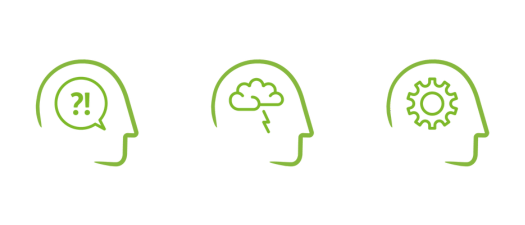Autism is not an illness. At the Autism Education Trust, we approach autism as a different way of being rather than as a ‘deficient’ or ‘disordered’ way of being.
Why Autism is a Difference, not a Deficit
Being autistic does not mean you have an illness or disease
It means your brain works in a different way from other people.
Autism is not a medical condition with treatments or a "cure". Autism is a processing difference that can have an impact on many areas of a person’s life.
Autistic people will experience differences in three key areas

- Social Understanding and Communication
Autistic people have differences in the way they communicate, understand and use language. They engage in social life from a different perspective (Milton, 2011). This leads to differences in how the person interacts and develops relationships.
- Sensory Processing and Integration
Sensory differences can include hyper (high) or hypo (low) sensitivity in relation the eight senses of sight, hearing, touch, taste and smell, interoception (internal sensations), balance (vestibular) and body awareness (proprioception). These differences will vary from person to person and can actually fluctuate in their responsiveness depending on a number of different factors for example the time of day or the environment.
- Flexible Thinking, Information Processing and Understanding
Autistic people have differences in their attention, interests and how they learn. This can include being very focused on particular interests. They have a different way of being flexible, so often feel safer and more comfortable with routines and structure as this lessens uncertainty.
There is no 'typical' autistic person
While autistic people share these similar characteristics to some degree, they are also all different from each other. This is because autism is considered a spectrum. The autism spectrum is not linear from high to low but varies in every way that one person might vary from another.
There is no ‘typical’ autistic person. Every autistic individual has their own strengths, differences and needs, their own life journey and their own unique story.
Autism in an educational context
More than one in 100 people are [autistic] and there are around 700,000 autistic adults and children in the UK.
https://www.autism.org.uk/advice-and-guidance/what-is-autism
Autism is not always easy to detect as many autistic people mask their differences, this means there could be children and young people in education provisions who are not yet diagnosed.
Some people can go undiagnosed for a very long time, sometimes their whole life.
However, the needs of young people should always be identified and addressed, whether that's autism, a literacy problem, or a social and communication difficulty, trouble with mathematics...
Staff should not focus all their efforts on ‘getting a formal diagnosis’ as they can address the needs of the child or young person without this - by building a relationship with the individual and their family to find out what their barriers to learning may be.
Autism commonly co-occurs with other conditions, including learning difficulties, ADHD, OCD, epilepsy, or mental health needs.
Reports from autistic adults and children often state that it is not their autism that poses them difficulties as such, but the expectations and responses they have from other people.
In particular, the expectation to act, respond and learn in the same way as others.

When working with autistic children and young people, it is imperative to understand that such individuals have a differing way of processing information and thus differing understandings and social expectations to their more typically developing peers.
This can create barriers with regard to understanding the communications and intentions of others, as well as a perceived lack of understanding from others of their own intentions.
This disruption in mutual understanding coupled with sensory sensitivities can make educational settings particularly challenging environments for autistic children and young people. It is therefore vital that staff enhance their understanding of these differences and make adjustments to their own style of interaction, their expectations and modify the environment to ensure it is conducive to learning.
If you would like to read more about the terminology the AET uses and how we talk about Autism, please view our Terminology guide here:

